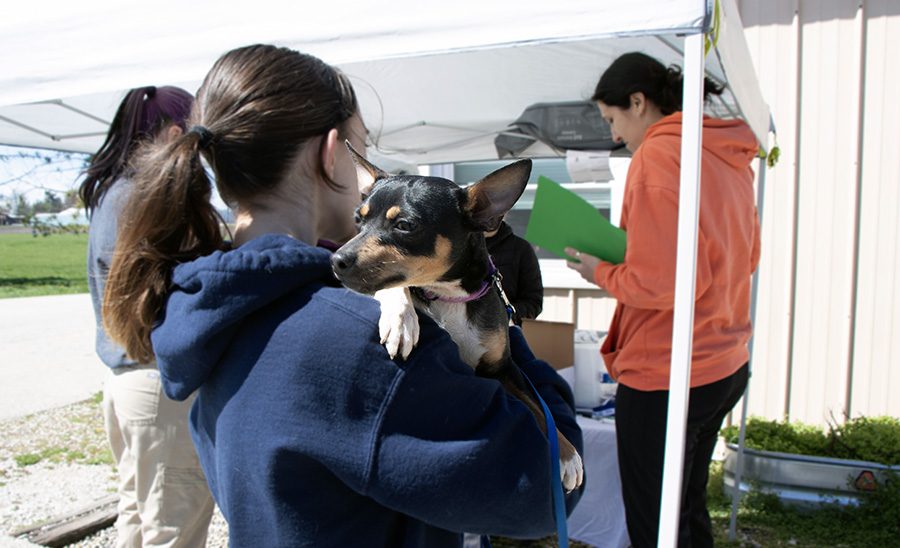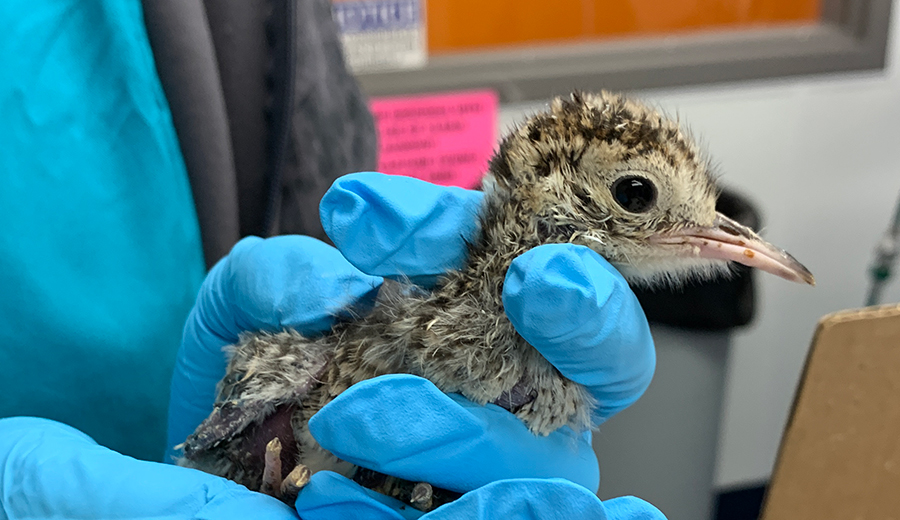Pyometra is a veterinary emergency
When a middle-aged, intact female dog comes into the clinic with complaints from her owner that she has been depressed and lethargic, one of the first concerns that likely pops into the veterinarian’s mind is a potential pyometra.
“A pyometra is a uterine infection, and it is a true veterinary emergency,” says Dr. Gary Brummet, the veterinarian who leads the primary care service at the University of Illinois Veterinary Teaching Hospital in Urbana.
What Causes Pyometras
Pyometras develop as a result of hormonal changes that take place in the reproductive tract during the normal hormonal cycle of a female. After an estrus (often referred to as “heat”), a hormone called progesterone remains elevated to assist the uterine lining in thickening in preparation for a potential pregnancy. Sometimes, if there are multiple cycles that persist without a pregnancy, the uterine lining can continue to thicken and secrete fluids, creating an environment that allows bacteria to grow quite well.
“Often pyometras become evident two to three months after the dog’s last heat cycle,” says Dr. Brummet.
Pyometras are categorized as “open” or “closed.” In an open pyometra, infectious material leaks from the uterus; owners may notice a bloody, yellow, or cream-colored discharge on their dog’s fur near the uterine opening or on their bedding. A closed pyometra means that all the infectious material is trapped inside the uterus and builds up.
Symptoms of Pyometras
Pyometras are most often found in dogs of any breed between the age of 6 and 10, and may be more common in dogs that have never had puppies. They do not occur in spayed animals, since a spay surgery involves removing the uterus. In extremely rare instances pyometras can occur in cats.
“Along with appearing fatigued and depressed, dogs may stop eating, spike fever, have an abdomen that is distended and painful to touch, and urinate and drink more frequently,” says Dr. Brummet.
Bacteria may release toxins that alter kidney function and impair the kidney’s ability to manage and retain fluid. This can cause the increase urine production that is often seen, and in turn the increased drinking may be the dog’s attempt to compensate for the loss in fluid.
If a pup is showing any of these signs, she should be taken to the veterinarian immediately. There is a risk of sepsis with an untreated pyometra. Sepsis is when bacteria from an infection gets into the blood and thus is spread throughout the body via the circulatory system.
Diagnosis and Treatment of Pyometras
Your veterinarian may elect to do blood work, take a radiograph (X-ray) and/or perform an ultrasound to diagnose the pyometra. Pyometras are most often treated by surgical removal of the uterus.
“Surgery for removing a uterus that has a pyometra is much more risky than a spay. The uterine wall will be fragile, and there is a chance that it could rupture and introduce infectious material into the dog’s abdomen during the procedure,” explains Dr. Brummet.
The only sure way to prevent this emergency is to spay the dog.
“The risk of a pyometra is one of the factors owners need to weigh when making the decision to spay or leave the female intact,” says Dr. Brummet.
By Hannah Beers

![[pyometra dog photo]](https://vetmed.illinois.edu/wp-content/uploads/2021/04/pc-pyo-brummet.jpg)


